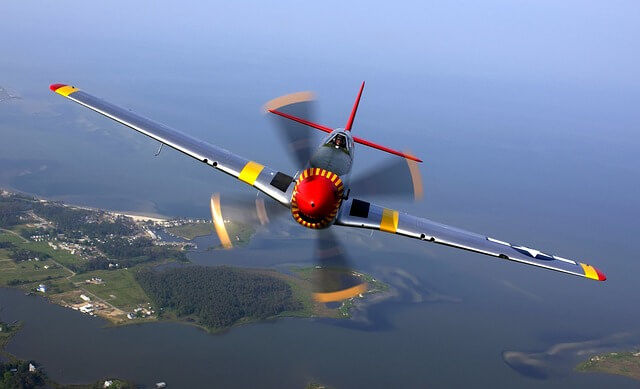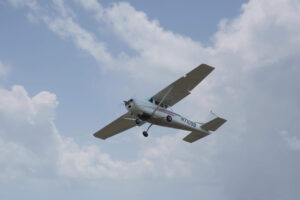Aviation regulations can be complex, but understanding them is crucial for ensuring safe and compliant flights. One of the most important regulations for pilots to know is FAR 91.205, which outlines the required equipment for aircraft. To help pilots remember these requirements, the acronym ATOMATOFLAMES is used. This guide will break down the ATOMATOFLAMES acronym, explaining each component and its significance in ensuring safe flight operations.
Understanding FAR 91.205
FAR 91.205 specifies the required instruments and equipment for civil aircraft with standard category U.S. airworthiness certificates. It details the necessary equipment for Visual Flight Rules (VFR) day and night flights, as well as Instrument Flight Rules (IFR) flights. Understanding and complying with these requirements is essential for all pilots.
ATOMATOFLAMES: Required Equipment for VFR Day Flights
ATOMATOFLAMES is an acronym that helps pilots remember the equipment required for VFR day flights according to FAR 91.205(b):
- A – Airspeed Indicator
- Essential for monitoring and maintaining safe airspeeds.
- T – Tachometer (for each engine)
- Measures engine RPM, critical for engine performance monitoring.
- O – Oil Pressure Gauge (for each engine using a pressure system)
- Monitors oil pressure to ensure engine lubrication and prevent damage.
- M – Manifold Pressure Gauge (for each altitude engine)
- Measures the pressure in the intake manifold, important for performance in altitude engines.
- A – Altimeter
- Displays the aircraft’s altitude, crucial for maintaining proper flight levels.
- T – Temperature Gauge (for each liquid-cooled engine)
- Monitors the temperature of liquid-cooled engines to prevent overheating.
- O – Oil Temperature Gauge (for each engine)
- Ensures the oil temperature is within safe operating limits.
- F – Fuel Gauge
- Indicates the amount of fuel in each tank, essential for fuel management.
- L – Landing Gear Position Indicator
- Confirms the position of retractable landing gear, ensuring safe landings.
- A – Anti-Collision Lights
- Required for aircraft certificated after March 11, 1996, to enhance visibility.
- M – Magnetic Compass
- Provides directional guidance in case of electronic navigation system failure.
- E – Emergency Locator Transmitter (ELT)
- Helps locate the aircraft in the event of an emergency landing.
- S – Safety Belts
- Mandatory for all occupants during takeoff, landing, and turbulence.
Additional Equipment for VFR Night Flights: FLAPS
For VFR night flights, the acronym FLAPS is added to ATOMATOFLAMES to include additional required equipment as per FAR 91.205(c):
- F – Fuses
- A set of spare fuses must be available in case of an electrical failure.
- L – Landing Light
- Required for aircraft flown for hire to illuminate the landing area.
- A – Anti-Collision Lights
- Enhances aircraft visibility at night.
- P – Position Lights
- Indicates the aircraft’s position and direction of travel.
- S – Source of Electrical Power
- Ensures a continuous power supply to electrical systems.
Understanding IFR Requirements
FAR 91.205(d) outlines the requirements for IFR flights, which include all the equipment from both VFR day and night (ATOMATOFLAMES and FLAPS) along with additional instruments necessary for IFR operations. Knowing these requirements ensures that pilots can operate safely in all weather conditions and navigate effectively without visual references.
Practical Tips for Pilots
- Familiarize Yourself with the Acronyms: Regularly review ATOMATOFLAMES and FLAPS to ensure you remember the required equipment.
- Pre-Flight Checks: Incorporate these acronyms into your pre-flight checks to confirm all necessary equipment is operational.
- Understand the Regulations: Beyond memorizing the acronyms, ensure you understand why each piece of equipment is required and how to use it.
- Stay Updated: Regulations can change, so stay informed about any updates to FAR 91.205.
Conclusion
Knowing and understanding the required equipment for VFR and IFR flights is a fundamental part of being a responsible pilot. The ATOMATOFLAMES and FLAPS acronyms are valuable tools for remembering these requirements and ensuring that your aircraft is equipped for safe operations. By incorporating these checks into your routine, you can enhance safety and compliance, making every flight as secure as possible.
FAQs
Q1: What should I do if a required piece of equipment is inoperative? If a required piece of equipment is inoperative, refer to FAR 91.213 for guidance on inoperative instruments and equipment. This may involve placarding the equipment as inoperative and verifying that the aircraft is still safe to fly under the given conditions.
Q2: Do I need to know these acronyms for my checkride? Yes, knowing these acronyms is important for your checkride. You should be able to explain each item and understand its significance in ensuring safe flight operations.
Q3: Are there exceptions to these equipment requirements? Yes, there are some exceptions based on the age and type of aircraft. Always refer to the specific regulations and your aircraft’s operating handbook for detailed information.




